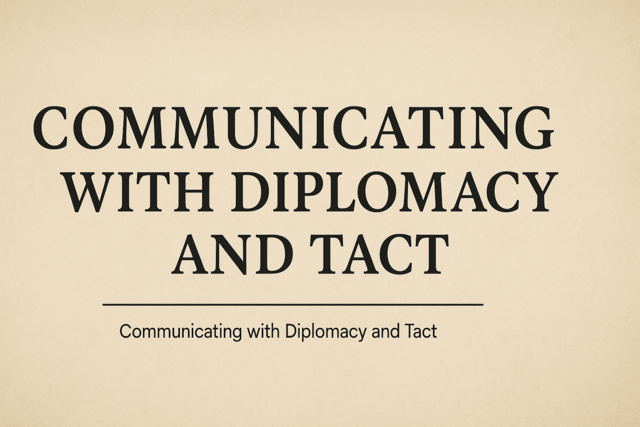Understanding how to communicate with diplomacy and tact, it is crucial to understand something about the needs of the self. This is not because you need to understand more about yourself and your own needs, but because it's important to understand the fundamental needs of the people with whom you're interacting. With a greater understanding of these needs that all people have, you are better equipped to ensure that these needs in others are preserved through your communication, which in turn enables you to communicate with increased diplomacy and tact.
The self and interpersonal needs
Image management
In discussing needs of the self, it is important to understand that everyone has a public image they seek to maintain. This is how we wish to be seen or perceived by others. In image management, we consider the kind of image we want to project. Image management is the process. It certainly involves others, as they participate in our construction of our own image through their influences. It's also complex in that we have different images and different contexts � you wouldn't want to project the same image in the classroom for your peers and professors as you would want to for your friends at the bar on a Friday night. Sometimes these images clash, which brings a bit of distress. This occurs when, for example, you bring your girlfriend to meet your family for the first time and you have to simultaneously manage the image of you that your girlfriend knows with the image of you that your parents know. In terms of communicating with diplomacy and tact, if you want to instill positive feelings in others to your interactions with them, which is, of course, the definition of diplomacy and tact, then it may be wise to contribute to constructing the image that others wish to construct for themselves. In other words, if someone wants to be perceived as competent and you can recognize and understand this, then you would probably refrain from pointing out an incompetency in the interest of diplomacy and tact.
Face needs
The idea of face was put forth by sociologist Erving Goffman in the 1950s and became a mainstream concept through his books. You've probably heard of the idea of saving face or of losing face. These are the concepts referenced here. The concept of face is arguably so vital to communicating with diplomacy and tact that we will spend the remainder of this article on this concept.
In our everyday social lives, we maintain our own face and/or uphold others' face. Thus, face maintenance is the civilized front we use to present ourselves to others every day via politeness rituals. Through the routines in which we engage and take for granted every day, we sustain our face or interaction poise. We really only notice face when it is threatened. Face-defending or face-saving strategies are almost always needed in conflict situations, when one face is being threatened or attacked. When our face is being attacked, we become emotionally vulnerable or anxious, and begin to experience emotions, such as fear, anger, humiliation, guilt, shame, disgust, and contempt. Concerns of face and face strategies generally include requesting, embarrassment, performance feedback, and complimenting situations.
In preventative face work, communicators employ a range of strategies to avoid losing face. These might include credentialing, or asserting one's status before delivering potentially face threatening comments. An example might be, "I've been doing this for a long time and I think�" or, "I love you very much and only want the best for you; that's why I'm telling you this�" A second strategy is a suspended judgment appeal, which directly requests the listener to suspend premature judgment. An example is, "Before you make up your mind, listen to what I have to say." Third, communicators can use pre-disclosure, which relies upon relational solidarity/bonding statements in exchange for face support. An example is, "We've all made fools of ourselves at some point or another. So�" Another example, which can be quite useful, is "I'm going to disagree with you." Pre-apology is the next strategy, and includes self-deprecating apologies to lower expectations. An example is, "I�m sorry I have to tell you this�" Hedging means preemptive, fudging phrases, such as, "I may be way off here, but it looks to me like�" A disclaimer is a pre-handicapping statement used to cushion potential criticism. An example is, "Since you all know a lot more about this than I do�"
In restorative face work, communicators use a range of strategies to restore face that has been lost. These include direct aggression, which is yelling or physical violence; excuses, or explanations to minimize the personal responsibility for the offensive behavior; justifications, or explanations to downplay the severity of face-loss behavior; humor, which is laughing at the actors' mistakes, or humoring them to encourage them to lighten up; physical remediation, which attempts to repair physical damage, such as cleaning up the mess someone accidentally made; passive aggressiveness, or denial, forgetfulness, sarcasm, blaming, or complaining; avoidance, which is distancing oneself from the situation; and apologies, which are self-deprecating efforts to alleviate guilt or shame.
The concept of face is instrumental to a conversation about communicating with diplomacy and tact. It is so vital to this topic, in fact, that we will return to it in later chapters with our discussions of politeness.































